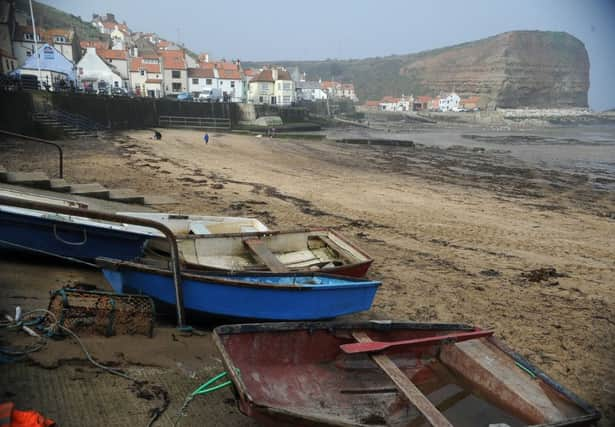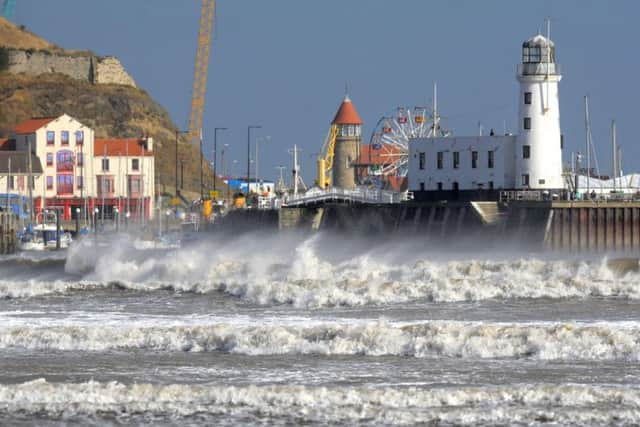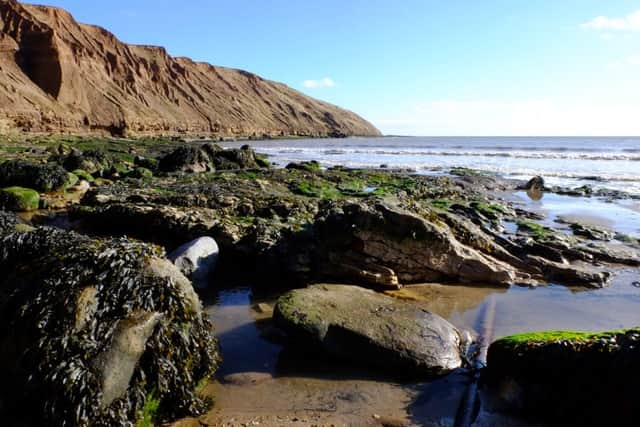Bays of plenty: Exploring Yorkshire’s Dinosaur Coast


To stand on the high moors above Whitby and Robin Hood’s Bay with the ancient church and a abbey of Whitby distantly overlooking the harbour, it is a unique experience. Few high moors lie so close to the sea and so to watch the short eared owl quartering over a moorland edge with extensive views of the cliffs, the sands, the bay and the towns is remarkable.
Today the coastal moors are separated from the sea by at least a sliver of farmland and clifftop rough grassland. However, a few centuries ago, before the parliamentary enclosures and the retreat of the heather, the sea and the moors were almost one.
Advertisement
Hide AdAdvertisement
Hide AdThe high moors and the wild sea cliffs dominate the North Yorkshire landscape, but the inland area also has much to offer. Villages and towns like Pickering and Helmsley offer a backdrop to the wild moors and the dramatic coastline. The wild areas are meshed together by intimate valleys, each with farmsteads and small villages with the distinctive red bricks and red tiled roofs.


Twentieth century forestry has also been important here and the dark, sombre shrouds of conifer plantations dominate many upland scenes. Today, these planted, exotic woodlands provide shelter for roe deer and other wildlife. The inland areas of the Vale of Pickering and the long tongues of the valley that extend north into the moorland massif are good places for the lover of nature to explore.
While the lowlands are home to nationally famed populations of wild daffodils, but also to deer and wildflowers, the higher ground, with its vast expanse of moors and bogs is a chance to experience wild nature.
North Yorkshire boast some of the most stunning countryside and amazing seaside anywhere in England. From the southern areas around Filey, Scarborough and the extensive Vale of Pickering through the rugged North York Moors with Robin Hood’s Bay, and then Whitby and Sandsend, to Staithes and northward to Saltburn, this is Yorkshire at its best.
Advertisement
Hide AdAdvertisement
Hide AdHistorically, the region was important in the early development of Christianity, and in the lower areas, it was good farming country too, so long as the floods allowed.


The area has been inhabited since early prehistoric times, with ancient burial chambers, standing stones, forts and stone crosses in evidence throughout. While transport has always been difficult in these remote areas, the geology has bred communities able to adapt to the harshest environments and indeed to thrive within them.
The moorland farmers have had to be resilient and tough and while agriculture remains the main moorland occupation today, there are plenty of signs of an industrial past. There was mining for coal, jet and iron ore and quarrying for limestone, building stone and lum shale. Alum was important to the textile industry which used it to fix colour in cloth and the industry thrived in the regional from the early 17th century until 1871, the year when recently discovered chemical dyes became available. The industry collapsed almost overnight. Once despoiled by heavy industry, many of these places are now green, pleasant landscape, but as a result of this mineral based past the scars of industrial activity on the moors make the area of great interest for ind
Along the coast were numerous small fishing communities. None could match the importance of Whitby, which combined traditional fishing with whaling, its ships setting out to scour the oceans for the greatest mammals of all. From the late 1700s onwards, the region grew in importance for its health tourism with spas and then sea bathing and by the 20th century fishing had become much less important than holidaymaking, as thousand people flocked to Scarborough and the smaller resorts.
Advertisement
Hide AdAdvertisement
Hide AdThe North York Moors, once a place for travellers to avoid, is now a major National Park that draws millions of people to the region. Here in North Yorkshire, the sea pounds the great cliffs, some of which annually tumble and fall under the assault.
Beyond the clifftops are rich farming lands, interspersed with ancient woods and low lying heaths. Then, above all, the dark, silent sombre moors brood almost malevolently as a stark counterbalance to the ceaseless, noisy swirl of the North Sea.
This is a landscape of sharp and dramatic contrasts. Wildlife, history, heritage and landscape combine to make the northern coastline of Yorkshire a dramatic place to visit. Whitby Museum holds evidence of the great sea creatures that formerly populated this region millions of years ago. Even today as the sea inexorably erodes the soft shale rocks, fossil and remarkable sea life, from small ammonites to giant plesiosaurs, are uncovered. This truly is the “Dinosaur Coast”.
The North Yorkshire coast is a truly unique and remarkable meeting place for people and history and for nature and the elements. From times immemorial to the modern day, this coastline has been a meeting place for cultures, communities and above all the sea.
Advertisement
Hide AdAdvertisement
Hide Ad• Ian Rotherham is professor of environmental geography and reader in tourism and environmental change at Sheffield Hallam University. His latest book, Yorkshire’s Dinosaur Coast, is published by Amberley priced £14.99.